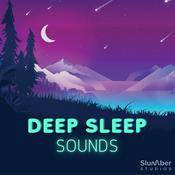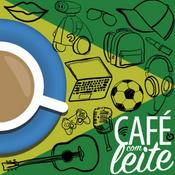16 episodios

The Animal that Breathes WITHOUT Lungs!
30/4/2025 | 2 min
Surely we all need lungs to breathe?But what if we didn't? How would that work?In today's episode Fin tells us about a tiny animal that doesn't have lungs but breathes just fine. Click play to find out what animal it is. You'll be amazed at how they do this.Transcript:Welcome to Brain Pop! — where your brain goes boom with one mind-blowing fact every day!I’m Fin — your curious, crawling, fact-finding buddy — and today we’re zooming in on some of the smallest creatures on Earth… and discovering a BIG surprise about how they breathe!Let’s get that brain popping — no lungs required!Alright, take a deep breath with me.In through your nose… and out through your mouth.Feels good, right? That’s your lungs at work! Humans (and most animals you know — like dogs, cats, even whales) have lungs that take in oxygen from the air and move it into the blood, so every part of the body can stay alive and active.But guess what?Ants don’t have lungs.Nope! Not even tiny little ones.Ants are way too small to fit big organs like lungs inside their bodies. Instead, they have a completely different — and totally brilliant — way of breathing!Ants have tiny holes on the sides of their bodies called spiracles. Air enters through these holes and travels through a network of tiny tubes called tracheae.These tubes carry the oxygen directly to their muscles and organs — no need for blood to do the work like in humans! It’s like an instant air delivery system.Here’s an easy way to picture it:•Imagine if you didn’t need lungs at all — and instead had little straws all over your skin that slurped up air straight into your muscles.•You could be running, jumping, climbing — all fueled by mini air tunnels! That’s how ants roll.And because they’re so small, ants don’t need nearly as much oxygen as humans do.If humans breathed like ants, we’d need a network of tubes sticking out of our bodies everywhere — which, um, might make soccer games a little tricky.Wow — ants are tiny but totally mighty! No lungs, no problem!Thanks for popping your brain with me on today’s itty-bitty, breathing-without-lungs episode of Brain Pop!.Be sure to crawl back tomorrow for another small but mighty fact. And here’s your ant-sized question of the day:If you could shrink down to the size of an ant, what’s the first thing you would explore? A blade of grass? A kitchen crumb? A LEGO city?See you next time on Brain Pop! — where curiosity is cool, facts are fun, and every day your brain goes BOOM!

The person with feet as long as SKATEBOARDS
29/4/2025 | 3 min
Do you know that humans come in all shapes and sizes? Some even have feet as long as a skateboard.In today's episode Fin tells us about 5 record breaking humans. You won't believe some of these facts.Transcript:Welcome to Brain Pop! — where your brain goes boom with one mind-blowing fact every day!I’m Fin — your fact-hunting friend — and today we’re not diving under the ocean or flying into space. Nope. Today, we’re looking right here on Earth… at some of the most extraordinary people to ever live!Let’s get that brain popping — with record-breaking bodies!Every human is special, but some people are extra unforgettable because of their super-sized or super-small features.Let’s meet five amazing examples:1. The Tallest Person Ever: Robert WadlowRobert Wadlow, from the United States, holds the record as the tallest person ever recorded. He grew to a height of 8 feet 11 inches — that’s 2.72 meters!To picture that, imagine stacking two refrigerators on top of each other. Or standing next to a baby giraffe — and Robert would STILL be taller!He needed special furniture and even a custom-built car just to fit his giant frame.2. The Shortest Person Ever: Chandra Bahadur DangiOn the flip side, the shortest adult ever measured was Chandra Bahadur Dangi from Nepal. He was just 21.5 inches tall — about 54.6 centimeters. That’s shorter than a toddler!You could fit Chandra comfortably in a regular school backpack!Even standing on a chair, he barely reached an adult’s waist.3. The Largest Head Circumference: Joseph Carey Merrick (The Elephant Man)Joseph Merrick, who lived in the 1800s, had a head circumference of about 36 inches — that’s 91 centimeters around.To imagine that, think of the size of a large beach ball — bigger than some people’s entire upper body! His condition made him famous, but also showed the world the importance of kindness and acceptance.4. The Biggest Feet: Jeison Orlando Rodríguez HernándezJeison, from Venezuela, has the biggest feet recorded for a living person today. His right foot is over 16 inches long — that’s about 40 centimeters.That’s about the length of a regular skateboard!And no, he definitely can’t just walk into a shoe store and grab a pair — his shoes have to be specially made.5. The Biggest Hands: Sultan KösenSultan Kösen, from Turkey, has the largest hands ever recorded. Each hand measures 11.22 inches from the wrist to the tip of his middle finger — that’s about 28.5 centimeters!That’s longer than a standard school ruler — and almost as big as a pizza box if you stretch from fingertip to fingertip across two hands!Wow! — humans come in all shapes and sizes, and each one is a wonder!Thanks for popping your brain with me on today’s record-breaking, jaw-dropping episode of Brain Pop!.Come back tomorrow for another awesome adventure through the weird and wonderful world. And here’s your big question for today:If you could set a world record, what would it be for? The world’s longest drawing? The loudest laugh? The fastest LEGO builder?See you next time on Brain Pop! — where curiosity is cool, facts are fun, and every day your brain goes BOOM!

The Animal With Eyes as BIG as Beach Balls!
28/4/2025 | 2 min
An animal with eyes bigger than basketballs? Surely not!Well, actually there is. In today's episode Fin tells us about a sea creature that lives deep in the ocean that has eyes the size of beach balls.Find out which animal it is and why they need such silly eyes.Transcript:Welcome to Brain Pop! — where your brain goes boom with one mind-blowing fact every day!I’m Fin — your friendly fact explorer — and today we’re diving deep into the ocean to meet a creature with a body part SO big, it’s hard to even imagine.Let’s get that brain popping — with something giant and seriously googly-eyed!Okay, ready for today’s wild fact?There’s a creature deep in the ocean called the colossal squid — and it has the biggest eyes of any animal on Earth.How big are we talking?Each eye is about the size of a beach ball!Not a tennis ball. Not a basketball. A beach ball. Around 30–40 centimeters wide — that’s almost as wide as a large pizza!Why does the colossal squid need such ginormous eyeballs? Well, in the deep ocean, where it’s darker than a cave at midnight, having huge eyes helps them spot even the tiniest bit of light — like the glow of another weird deep-sea creature trying to sneak by.The colossal squid doesn’t just have big eyes — it’s also massive overall. It can grow up to 14 meters (or about 45 feet) long — about the size of a school bus! And it has hooks — yes, hooks — on its arms instead of just suction cups, like many other squids. Some of those hooks even swivel, like little grappling hooks.This squid is basically an underwater boss level creature.And get this — even though it sounds like something out of a monster movie, humans hardly ever see colossal squids. Most of what we know comes from squids caught accidentally by deep-sea fishing ships.The colossal squid lives in the super cold waters near Antarctica — swimming through pitch-black darkness, with its enormous eyes looking for prey. Creepy… and totally awesome!Wow! — that fact was bigger than my whole imagination!Thanks for popping your brain with me on today’s big-eyed, deep-diving episode of Brain Pop!.Come back tomorrow for another giant-sized curiosity. And here’s your ocean-sized question of the day:If you could have a superpower inspired by an animal, what would it be? Giant squid eyes to see in the dark? Dolphin sonar to find hidden treasures? Shark sense to smell a snack a mile away?See you next time on Brain Pop! — where curiosity is cool, facts are fun, and every day your brain goes BOOM!

Just How Big Is a Billion?
24/4/2025 | 3 min
Have you ever thought how much 1 billion really is? How much bigger it is than 1 million?If someone gave you a dollar every second you'd have 1 million dollars in days but you'd only reach a billion dollars in more than 3 decades.Listen to today's mind blowing episode where Fin discovers that a billion is WAY bigger than he thought.

Volcanoes That Go Boom!
23/4/2025 | 3 min
In today's episode Fin tells us some facts about volcanoes you've probably never heard of including volcano lightning and why volcanoes can actually be good. Sit back and press play on today’s lava-blasting episode of Brain Pop!Transcript:Welcome to Brain Pop! — where your brain goes boom with one mind-blowing fact every day!I’m Fin — your curious co-host of chaos and coolness — and today’s episode is full of lava, ash, and superheated surprises. That’s right — we’re talking volcanoes. And this one’s gonna erupt with facts.Let’s get that brain popping — hot magma style!Volcanoes are like the Earth’s pressure valves. When molten rock (that’s hot melted rock beneath the ground) builds up beneath the surface, and pressure gets too high… BOOM! The volcano erupts — shooting out lava, ash, gas, and rocks!But how powerful can volcanoes really be? Hold onto your marshmallows. This is where it gets wild.1. The Loudest Sound in History? A Volcano!Remember in Episode 9, we talked about the loudest sound ever? That was the eruption of Krakatoa in 1883. It was heard over 4,800 kilometers away — that’s from London to Egypt or Sydney to Singapore. People’s eardrums burst 60 kilometers from the explosion. Boom indeed.2. Mount Vesuvius Turned a City to StoneIn the year 79 CE, Mount Vesuvius erupted and buried the entire city of Pompeii in volcanic ash. People and animals were frozen in place for nearly 2,000 years, and we only rediscovered them in the 1700s. It’s like a time capsule of the Roman world!3. Volcano Lightning is a Real Thing!During super explosive eruptions, the ash cloud rubbing together creates static electricity — and then lightning shoots through the sky! It looks like a fire-breathing dragon battle in the clouds. Google “volcano lightning.” You won’t regret it.4. Lava is Hotter Than You ThinkLava isn’t just hot. It’s 1,300 to 2,200°F (or 700 to 1,200°C). That’s hotter than a pizza oven, a campfire, or even your toaster x100. It can melt cars, trees, and even rocks!5. There Are Underwater Volcanoes Too!Most people picture volcanoes as huge mountains, but did you know there are thousands of volcanoes under the ocean? In fact, the biggest volcano on Earth is underwater! It’s called Tamu Massif, and it’s bigger than the whole state of New Mexico. And guess what? Volcanoes aren’t all bad. They make new land, heat hot springs, and their ash can even help plants grow better. So they’re like the Earth’s way of making a mess — but also cleaning things up afterward!Wow! That fact was molten hot and totally explosive.Thanks for popping your brain with me, Fin, on today’s lava-blasting episode of Brain Pop!.Come back tomorrow for another mind-melting moment of truth. And here’s your volcanic question of the day:If you could name your own volcano, what would you call it? Lava Llama? Mount Marshmallow? Boom Boom Peak?See you next time on Brain Pop! — where curiosity is cool, facts are fun, and every day your brain goes BOOM!
Más podcasts de Niños y familia
Podcasts a la moda de Niños y familia
Acerca de Brain Pop
Escucha Brain Pop, Había Una Vez by Naran Xadul | Cuentos Infantiles y muchos más podcasts de todo el mundo con la aplicación de radio.net

Descarga la app gratuita: radio.net
- Añadir radios y podcasts a favoritos
- Transmisión por Wi-Fi y Bluetooth
- Carplay & Android Auto compatible
- Muchas otras funciones de la app
Descarga la app gratuita: radio.net
- Añadir radios y podcasts a favoritos
- Transmisión por Wi-Fi y Bluetooth
- Carplay & Android Auto compatible
- Muchas otras funciones de la app


Brain Pop
Descarga la app,
Escucha.


































